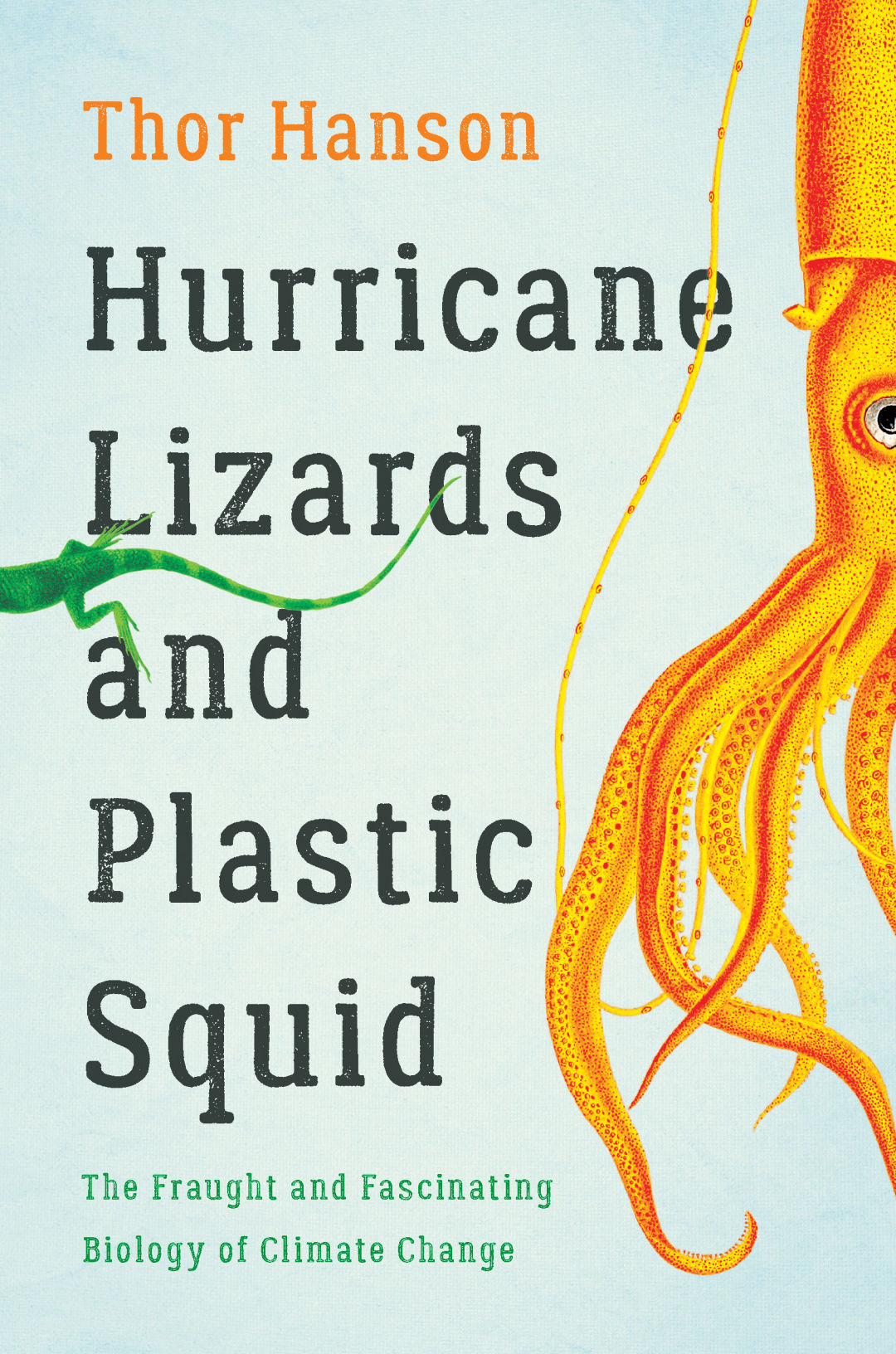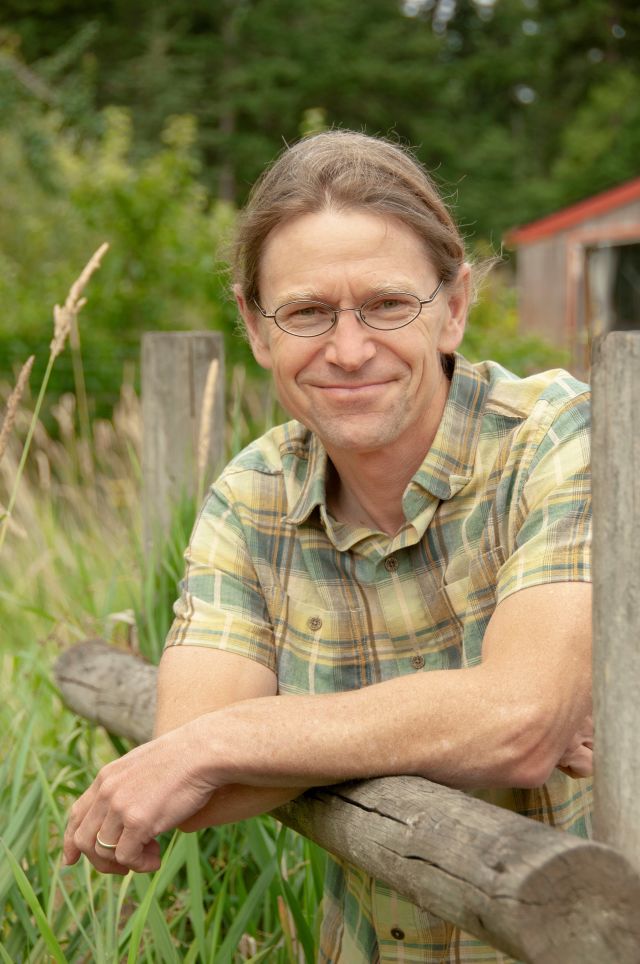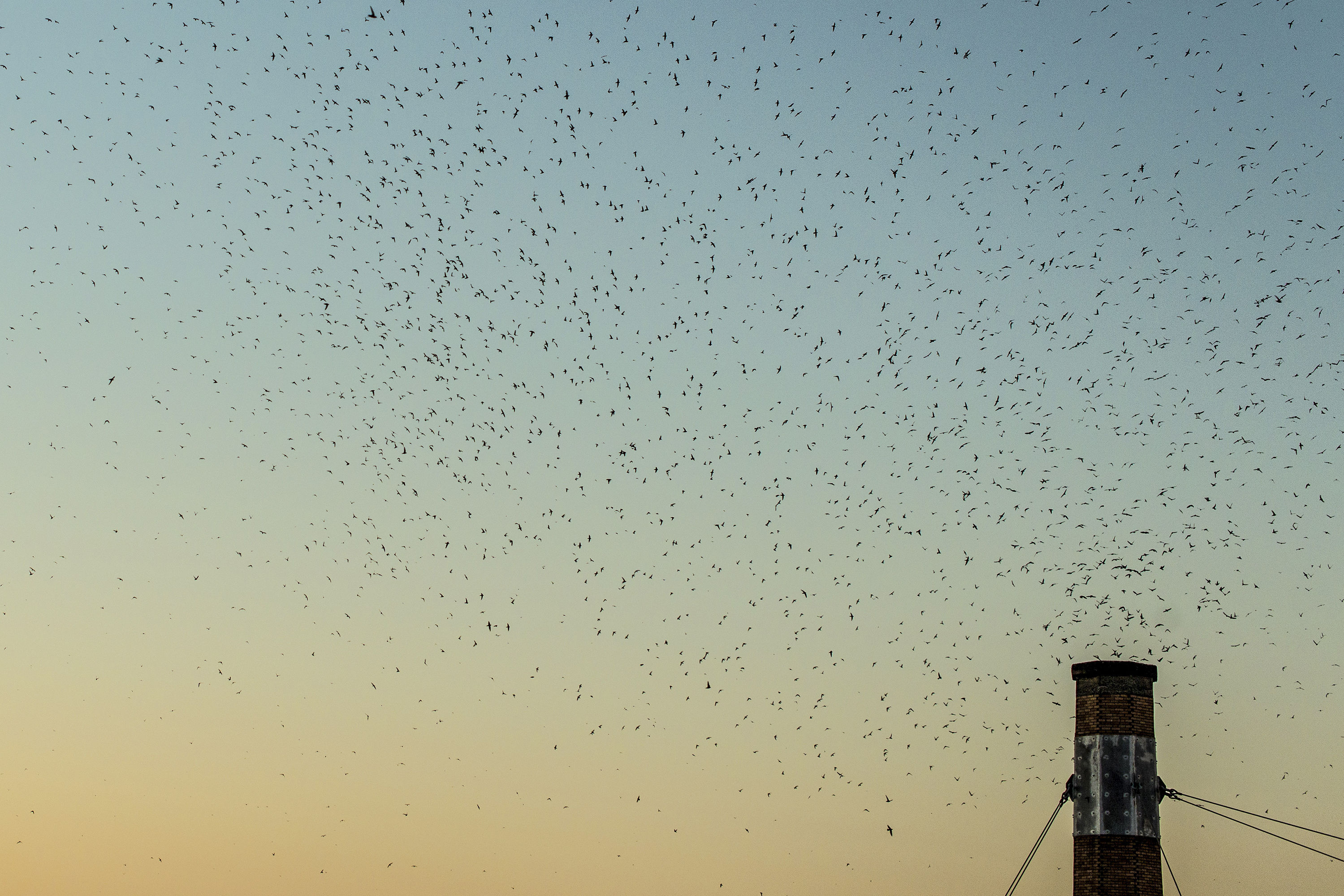Can Squid Teach Us How to Survive Climate Change?

“Though rooted in the climate crisis, this is not a crisis book,” writes Hanson.
Image: Basic Books
Welcome to the living proof of climate change: Let Thor Hanson be your guide. In an era of fierce political debate and apocalyptic projections, writer and conservation biologist Hanson invites you into another world. It’s a world of rapid evolution and ‘global weirding.’ It’s a world of toxic camas and their death-defying pollinators, sunflower starfish, brown pelicans, and spiny lizards. It’s the world of Hurricane Lizards and Plastic Squid.
“Though rooted in the climate crisis, this is not a crisis book,” writes Hanson. Instead, it is a book that explores the ways species are adapting to a changing world. The answers are sometimes daunting, often surprising, and always engrossing, in large part due to Hanson’s abundant curiosity.
A lifelong resident of the Pacific Northwest, Hanson’s research and writing has taken him across the globe from Tanzania to Alaska to Central America. He is a Guggenheim Fellow, a Switzer Environmental Fellow, and the co-host of the PBS series American Spring Live. The author of many award-winning books including Feathers, Buzz, and The Triumph of Seeds, Hanson’s dispatches invite us to look at the natural world in new ways.
We caught up with Hanson by phone before the release of Hurricane Lizards and Plastic Squid on September 28 and his virtual appearance at Powell’s City of Books on October 1.
What inspired you to write this book?
It's really a combination of things. In terms of inspiration, that image of a polar bear that I see constantly in the news was part of my thinking. We’ve got to get beyond that. That can't be the only symbol that we have for talking about climate change biology.

Author Thor Hanson
Image: Kathleen Ballard
But beyond that would be this experience of decades of various field projects in biology, where the role of climate change wouldn't necessarily have been considered, but then it would rise and planning and even beginning to execute these projects. But you would see climate change, rising to the fore in project after project, the influence of this global phenomenon, and how it is changing what we set out to study in the field. That's one of the most common refrains I heard from scientists in all disciplines when I was researching the book. They would go out into nature expecting to study one thing, and end up studying something else because the conditions on the ground were so different. And I've seen some of that in my own work and talked to a lot of other people now who are seeing those things. And I really wanted to get those stories out there, because it's an important part of the climate change discussion, and one that I think has received short shrift over the over the past several decades.
Was there something that you came across in your research that you weren't expecting to find?
Oh, surprises abound! This is one of the lessons of climate change biology: expect the unexpected.
When it comes to changing ecosystems, species basically have three options—move, adapt, or die. Can you tell me why some species might be able to do one but not another? And why can some species adapt more rapidly than others?
One of the real goals of climate change biology is to try to understand what makes some species adaptable and others not. Why are some resilient to climate change and others more vulnerable? And how can we identify those differences so that we know how to direct scarce resources toward the species that really need help the most? What you've asked is something that climate change biologists are asking themselves all the time.
There are a number of answers. One has to do with something that biologists call plasticity, meaning flexibility that is inherent in an organism. You don't have to evolve this flexibility. It's already there in the genome of the creature.
One of the easiest ways, I think, to explain plasticity is to think about our own bodies. Think about the recent Olympics. All of the athletes who descended upon Tokyo for the Olympics and the Paralympics. These elite athletes, many of them descended literally, because they had been training at high elevations. And at high elevations, the air is less dense. So every breath that you take contains fewer molecules of oxygen, which is why people get out of breath when they first go up into the mountains. But if you stay there and train there, your body adapts to that by producing more red blood cells and altering blood flow and other things to become acclimatized to that high elevation setting.
You don't have to think about it. You don’t have to evolve a new trait. Your body is capable of doing that. That is plasticity. . . .There are species out there that also have plasticity in how they live. One of the classics—and one that is now in the title of the book—would be the plastic squid. This refers to the Humboldt squid, off the coast of Mexico in the Gulf of California.
Fishers traditionally harvested these massive, six-foot-long squid. Then suddenly, they disappeared. The waters had warmed. There were a series of marine heatwaves. And everyone figured these squid had migrated away to a place that is cooler, but in fact, when they did surveys, they found that the squid were there and even more plentiful than ever, but they had completely transformed their lifestyles, again, through plasticity. They didn't evolve a new response. They were capable of living differently.
When the waters got warm, they responded to that heat stress by maturing in half the time, by eating different foods, by growing half as long, and by growing only half as large. So much so that ...the hooks were too big to catch these small squid that were all around. Even when a fisher would haul one of these small ones up, they would think, ‘Oh, it's the juvenile or maybe another species,’ and just throw it back. But it was the plasticity of the Humboldt squid that allowed them to make a quick pivot.
There are a range of capabilities out there in terms of how species are able to respond. And the ones that have plasticity in their behavior and in even their physiology are the ones that are proving to be most resilient to climate change.
So maybe one of the biggest questions of the climate change era is how high is the behavioral plasticity of humans.
It is, isn't it? That is a huge question. And one of the things that I hope people will take away from these stories about plants and animals responding to climate change is, in some ways, a bit of inspiration. If you read and learn about a squid that can completely transform its lifestyle in response to climate change, could you think, ‘Well, gosh, maybe people should be able to change their habits that are bringing this whole thing about.’ I think we can take some practical lessons, and also a bit of inspiration, from what we see in nature.
The book has so many fun little experiments to learn about the scientific principles at work all around us. Do you have any suggestions for experiments that readers can do at home?
One of the simple things that one can do in terms of climate change is to observe the timing of events. The timing of events is what a scientist would call the phenology of things in your own backyard. And it can be done by making a little jot on your calendar—when things leaf out, when things blossom, when you see the first hummingbird, simple things like that. Over time, you can start to see patterns and trends. It doesn't take long in a world changing as rapidly as ours.
Henry David Thoreau, for example, at Walden became famous for his philosophies and stories of his time there. But unbeknownst to most people, he also kept extensive notebooks and journals with meticulous observations just of that kind. When did he see the first warbler of the year? When did the leaves come out on the honeysuckle? What were the first wild flowers to bloom in spring and what data did happen?
He kept all of that for years, but it completely disappeared. It was never published. These records were languishing in various museums, hither and yon, until some biologists got ahold of this stuff and began to go through it and said, ‘My God, here is our baseline for phenology.’ We can look and see what was happening in New England in the mid-19th century and compare that to modern observations and see how things have changed. And they've changed dramatically.
Richard Primack, this fabulous scientists at Boston University—a really nice fellow—told me, if Henry David Thoreau was listed as a co-author for all of the papers using his data today, he would be one of the most prolific climate change scientists in the world. And I think that's marvelous because it was an amateur effort. He was not a trained scientist. He was someone enthusiastic about nature, who wrote down what he saw. And then over time, those notes have become so valuable.
You’re a Pacific Northwest dweller. What kind of adaptations to climate change are you seeing here in the Pacific Northwest?
So many, it really is remarkable. And I think if once you start paying attention, just to stuff in the backyard, you start seeing these profound changes over time. I'll give you one that I've just been enjoying this morning. It’s not a negative change, necessarily. The arrival of the Anna's hummingbird into our world here in the far northwestern corner of the Northwest is still a relatively recent thing.
This is a bird species whose range is shifting, expanding northward as the temperatures warm, and it's now a year-round resident. Up here in far northwest Washington, the bird was very rare when I was a child and a young birder. But here it is now, living here year-round. And on this sunny afternoon, I was watching a young male practice his mating flight, getting ready for next spring already. They practice the mating flight by going way high up into the air and diving down and making this fabulous chirping sound with the vibrations of their tail feathers, and then they flash their wonderful throat of ruby feathers for all to see. And that is something that I could not have observed here, even 20 years ago.
There are changes that are negative. And then there are things that are not necessarily bad. I think it’s important to make those distinctions. Gretta Pecl, a brilliant person who studies movement in in animals in response to climate change, told me something I'll never forget. She said, if an animal can move and survive, that is a good climate change outcome. And I think that kind of advice is important when we try to get our heads around all of the changes going on. Remember that, if these creatures can survive, they do something different. And it may seem alarming to us. But if it's a survival strategy, if it works, that's a really good outcome for a period of rapid change like this.
Thor Hanson virtual event by Powell’s City of Books, register on Zoom, 5 p.m. Friday 10/1




